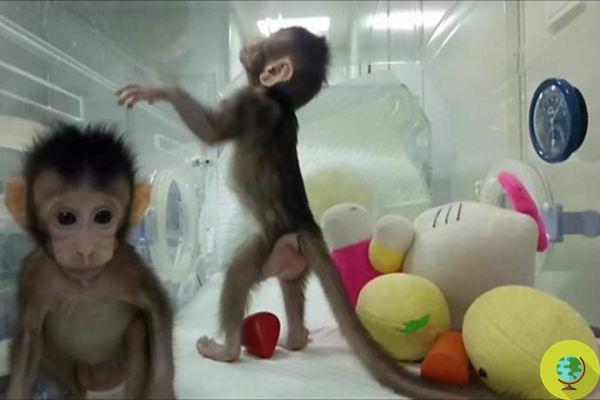
They are called Z hong Zhong and Hua Hua and are the first two monkeys in the world cloned using the same technique as Dolly the sheep. They were created in the laboratory by researchers from the Neuroscience Institute of the Chinese Academy of Sciences in Shanghai
He is about to end up run over, his mother saves him
They are called Z hong Zhong and Hua Hua and are the first two monkeys in the world cloned using the same technique as Dolly the sheep. They were created in the laboratory by researchers from the Neuroscience Institute of the Chinese Academy of Sciences in Shanghai.
A controversial goal, given that the method could also be used to clone humans. The two macaques arrived after several years of study, led by Zhen Liu of the Chinese Academy of Sciences, which peaked 8 and 6 weeks ago when two female macaques were born.
The two animals are genetically identical, both clones from the same cell culture. At the moment, they are in an incubator but they are fine.
However, this is not the first case of monkey cloning. In 1999, researchers "cloned" a rhesus macaque by dividing an early-stage embryo into multiple parts, effectively creating artificial identical twins. However, these efforts only produced cells that remained confined to the various laboratories, never developing.
In 1996, Dolly the sheep was the first mammal cloned using a technique called nuclear transfer of somatic cells. Unlike embryo cleavage, which can produce only a few copies, this method can theoretically produce an indefinite number of clones from a single donor. This allows researchers to create customizable and genetically uniform animal populations. Perspective to say the least disturbing.
Since then, over 20 species have been cloned - from cows to rabbits to double-recloned dogs - using this technique, but this is the first time non-human primates have been cloned.
Somatic cell nuclear transfer involves the transfer of the nucleus from the cell of one animal to the egg cell of another animal. Then, chemically, the egg cell is pushed to develop, as if it had been naturally fertilized. If this embryo reaches a certain stage of development, scientists can then implant it. If successful, the surrogate mother will become pregnant and give birth to an animal that is genetically identical to the nucleus donor.
The intention of Chinese researchers is to use this technique to breed macaques for biomedical research. Making exact genetic copies of the same animal would reduce the variability of results when testing new drugs or other therapies.
We are talking about a historical result. But the ethical implications are not considered. Even if cloned, they are still animals, not to mention that the cloning technique of this study can be applied to other primates such as humans. However, the authors point out that they have no intention of doing so. Furthermore, cloning could trigger an increase in the use of animals in scientific experiments.
READ also:
- 9 lesser known cloned animals
- Recloned the first dog created in the laboratory
The study was published in Cell
Francesca Mancuso


























